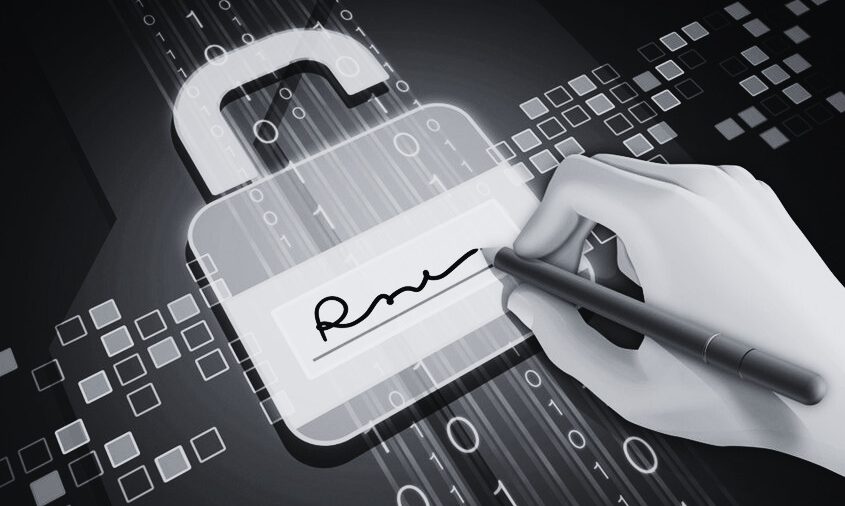The enactment of Law no. 214/2024 on the use of electronic signatures, timestamps, and the provision of trust services based thereon (“Law no. 214/2024”) marks a significant advancement in the Romanian legislation. It aims to establish a clearer and more predictable legal framework for the use and effects of the various types of electronic signatures and it aligns national legislation with the European Regulation on electronic identification and trust services for electronic transactions in the electronic market and repealing Directive 1999/93/EC (hereinafter referred to as the “e-IDAS Regulation”).
The previous Romanian legislation set out three types of electronic signatures:
- Base level security: the simple electronic signature – data in electronic form attached to or logically associated with other data in electronic form, serving as an identification method, such as a signature in png / jpg format applied in a Word document transformed into PDF (simple electronic signature under the e-IDAS Regulation);
- Advanced level security: the extended electronic signature – an electronic signature that meets certain conditions, such as ensuring the identification of the signatory (advanced electronic signature under the e-IDAS Regulation);
- Highest level of security: the extended electronic signature based on a qualified certificate – an electronic signature based on a qualified certificate issued by a trust services provider that complies with certain conditions (qualified electronic signature under the e-IDAS Regulation).
Under the previous law, only electronic documents signed with an extended electronic signature based on a qualified certificate were equivalent to documents bearing handwritten signatures, when the written form was requested for validity or evidentiary purposes. Similarly, Law no. 214/2024 also equates documents signed with a qualified electronic signature issued by a qualified trust services provider to handwritten signatures, except in cases requiring notarization.
The novelty of Law no. 214/2024 is that it equates other types of electronic signatures to handwritten signatures, as long as they satisfy certain conditions. Additionally, it harmonizes the terminology with the e-IDAS Regulation, classifying electronic signatures into three categories: simple, advanced, and qualified.
- Effects of electronic signatures
1.1. Written form required as a condition for validity
If the law requires the written form of a document as a condition for validity (ad validitatem), then the electronic signature used can be (i) qualified or (ii) advanced if it holds the same legal validity as a document signed with a handwritten signature, which, according to Law no. 214/2024, occurs in any of the following scenarios:
a. the document is signed with an advanced electronic signature created with a certificate for electronic signatures issued by a public authority or public institution in Romania or by a qualified trust service provider;
b. the electronic document is recognized by the party to whom it is opposed; recognition may arise from the party challenging the advanced electronic signature fully or partially executing the obligations arising from the electronic document;
c. the parties have expressly agreed, in a separate document signed with either a handwritten signature or a qualified electronic signature, to grant the advanced electronic signature the same legal effects as a handwritten signature.
1.2. Written form required for evidentiary purposes (ad probationem)
If the written form of a document is required only for evidentiary purposes (ad probationem), then the electronic signature used can be (i) qualified, (ii) advanced or even (ii) simple, if it holds the same legal validity as a document signed with a handwritten signature, which, according to Law no. 214/2024, occurs in any of the following scenarios:
a. in the case of pecuniary acts, with a value of less than half of the gross minimum wage at the date of signing the act (as at today, 1,850 lei, meaning around 370 euros);
b. the electronic document is recognized by the party to whom it is opposed; recognition may arise from the party challenging the advanced electronic signature fully or partially executing the obligations arising from the electronic document;
c. if both parties are professionals within the meaning of the Civil Code and they have expressly agreed, in a separate document signed with either a handwritten signature or a qualified electronic signature, to grant the simple electronic signature the legal effects of a handwritten signature.
2.2. Challenging the advanced electronic signature and the simple electronic signature
If a party challenges the advanced electronic signature or the simple electronic signature, checking its validity may be done by one of the following means:
a. by publicly available validation methods authorised by the relevant supervisory and regulatory authority;
b. by the issuer of the advanced electronic signature subject to meeting certain conditions;
c. by means of a specialized technical expert’s report, if the validity cannot be checked by the means provided for in letters a) or b) or, in the case of a simple signature, by other means of proof, under the conditions of the Civil Procedure Code.
In this case, the burden of proof regarding the fulfilment of the legal and technical conditions lies with the party asserting the validity of the signature
3. Entry into force
Law no. 214/2024 will enter into force on 8 October 2024

